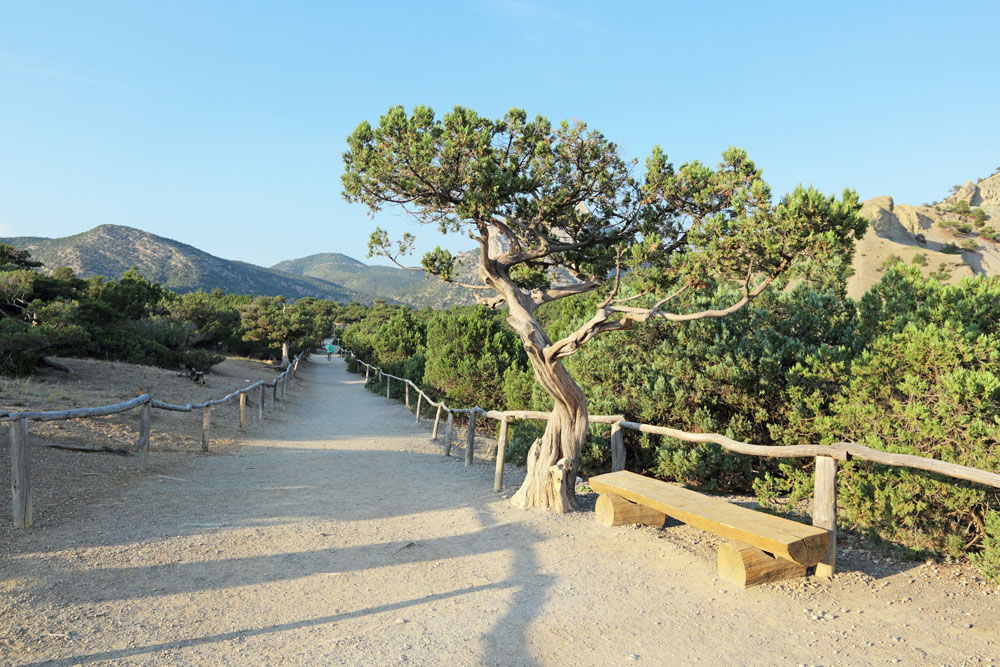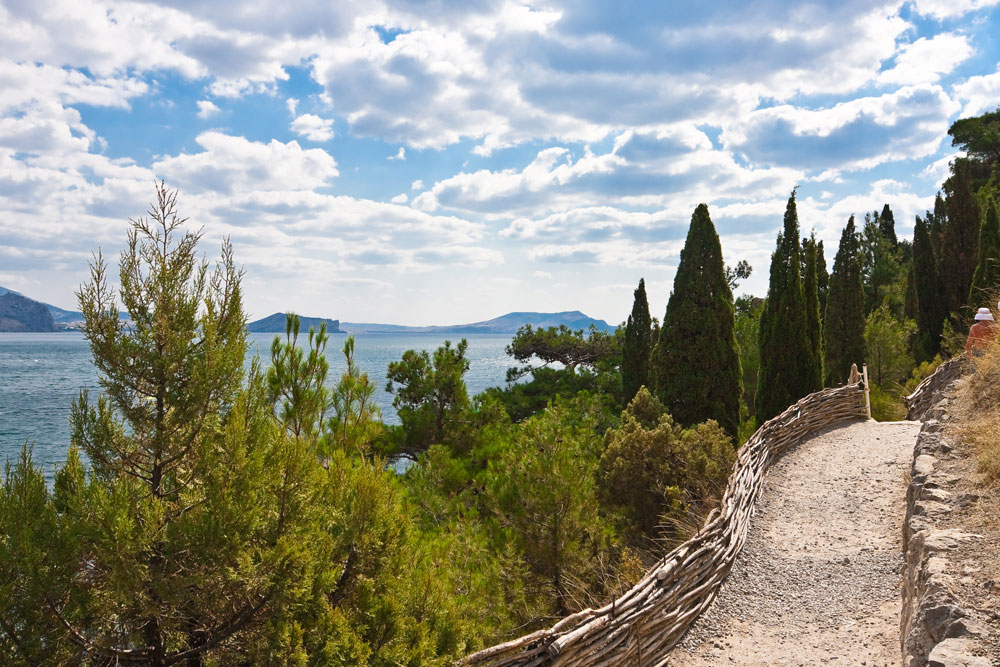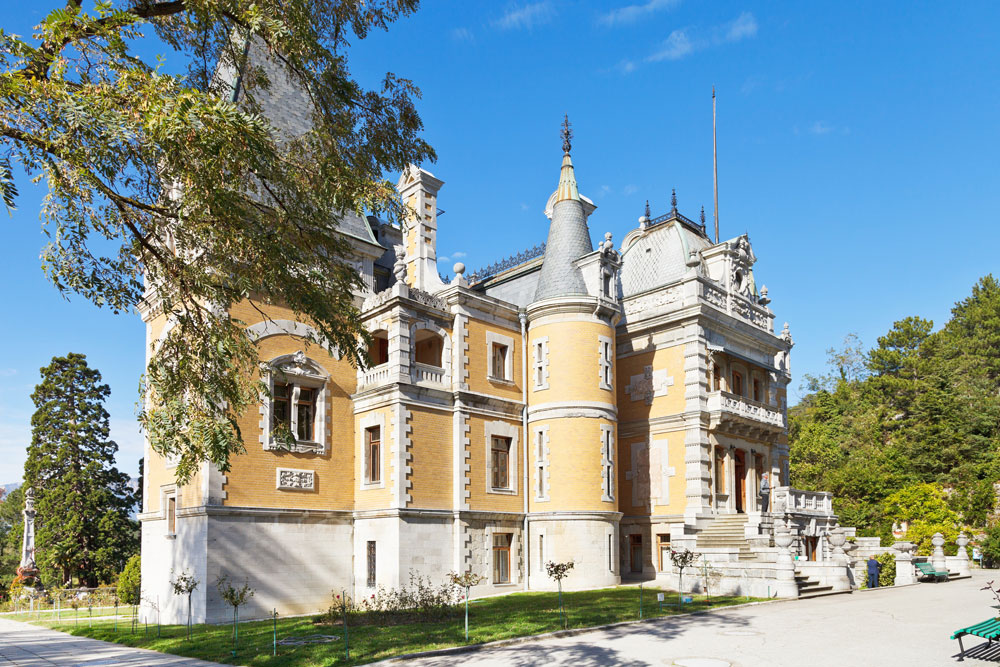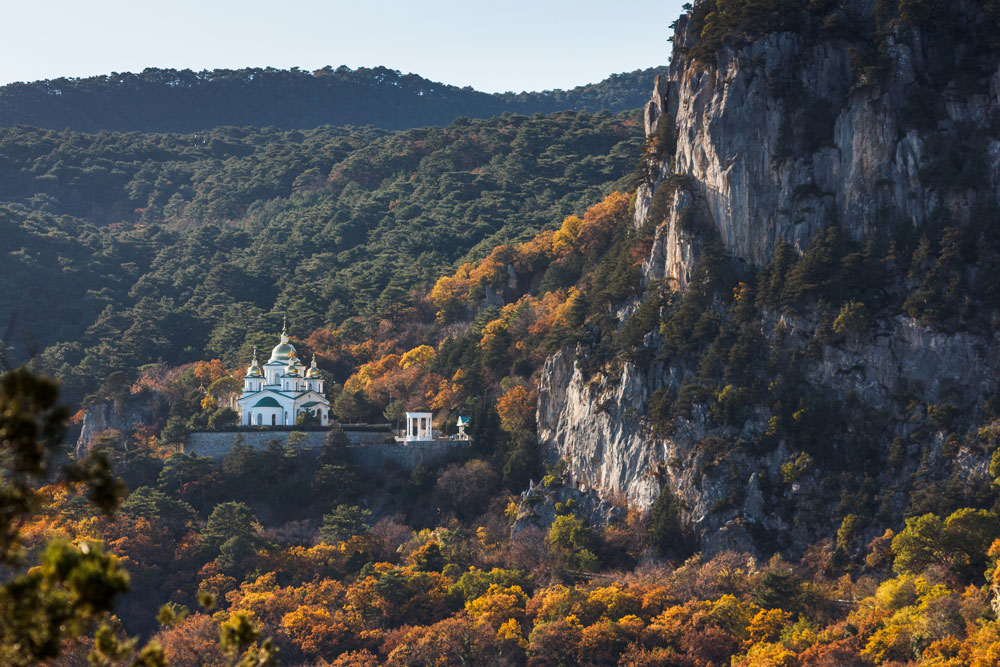Favourite Romanov destinations in Crimea

The royal trail in Juniper Grove, Crimea.
Lori / Legion-MediaThe Tsar's Path
The Romanovs loved the small town of Livadiya, 1,600 km south of Moscow, best of all. Alexander II ordered the town to be bought for Empress Maria Alexandrovna in 1861. A palace was built there soon after and a park created, where the Empress enjoyed the benefits of walking.
The last Tsar, Nicholas II, took his coronation oath here. He ordered a new palace, of white granite, to be built. The Tsar's Path was then laid out in a way to avoid any major gradient changes. Initially, the path ran only above Nizhnyaya Oreanda, but when Livadiya become an imperial residence it was linked with Grand Duke Michael Nikolayevich's Ai-Todor estate. In 1900, Nicholas II ordered it to be extended still further: a route more than 6.7 km long was laid out from Livadiya to the nearby Alexandria estate in Gaspra. The Tsar's family used to walk or ride on horseback along the path. The salubrious Crimean air made the route good for their health.
Golitsyn Path
In 1878, Duke Leo Golitsyn acquired some land near the small town of Sudak, where he set up a winery and built an Eastern-style villa. Nicholas II and his family came to this estate, called Paradiz ["Paradise”] in 1912, in the imperial yacht, the Standart. A 5,470 m long path was carved into Mount Koba-Kaya especially for his visit. The route ran along Zelyonaya ["Green"] and Sinyaya ["Blue"] bays and Cape Kapchik. Mount Koba-Kaya has numerous natural grottos, one of which, during the Middle Ages, was used as cave monastery. Golitsyn stored his wine there. According to the records, after walking the path and dining with Golitsyn, Nicholas II commented that life had appeared to him in a new light. This is one version of the origin of the name by which the estate is still known today: Novy Svet ["New Light"].
 Golitsyn Path. Source: Lori/Legion-Media
Golitsyn Path. Source: Lori/Legion-Media
Massandra
Alexander III acquired the Massandra estate in 1889. The earlier owner, German landscape gardener Carolus Keebach, (who created the nearby Alupka Park), had established an English garden there. This was very popular, with entry by ticket only. Construction of the palace was completed in 1902. The initial design, by the Frenchman Etienne Bouchard, was completed by Maximilian Messmacher, who designed a fairy-tale château. The Romanovs loved Massandra: Nicholas I and Empress Alexandra Feodorovna had visited it in 1837. Alexander III would always come there when he was in Crimea. Empress Maria Alexandrovna also loved walking in the park there. Nicholas II's family visited Massandra, where they would enjoy the park and organise picnics.
 Massandra estate. Source: Lori/Legion-Media
Massandra estate. Source: Lori/Legion-Media
Charax
The Charax estate (named after a Roman fort that was located there) on Cape Ai-Todor belonged to Grand Duke George Mikhailovich, a grandson of Nicholas I. An unostentatious Scottish-style castle, surrounded by a park, was built there in 1904. As a reminder of Charax's classical past, a summerhouse with 12 columns, given to the Grand Duke by Nicholas II, was built in the park. Initially, the columns had adorned the atrium of the imperial palace in Oreanda, but this was destroyed by a fire in 1881. The Tsar also visited Charax, and remarked on the simplicity and austerity of the palace.
 Charax estate. Source: Lori/Legion-Media
Charax estate. Source: Lori/Legion-Media
Oreanda
Located near Livadiya, picturesque and tranquil Oreanda caught the eye of Nicholas I. In 1837, he gifted it to Empress Alexandra Feodorovna. The first building appeared there soon after: a white half-rotunda marking the boundary of the imperial estate for travellers. A Renaissance-style palace came next, the first built for the imperial family in this part of Crimea.
An English-style park fitted in well with the local landscape. After Alexandra Feodorovna's death, the estate passed to Grand Duke Konstantin Nikolayevich. He loved the location, and spent much of his time there after retiring. In 1894, Crown Prince Nicholas, then heir to the throne, became owner of the estate. Though neither he nor his family stayed in Oreanda long, the Romanovs loved walking there. In their absence, ordinary people were also permitted to enjoy the park.
 Oreanda. Source: Lori/Legion-Media
Oreanda. Source: Lori/Legion-Media
All rights reserved by Rossiyskaya Gazeta.
Subscribe
to our newsletter!
Get the week's best stories straight to your inbox